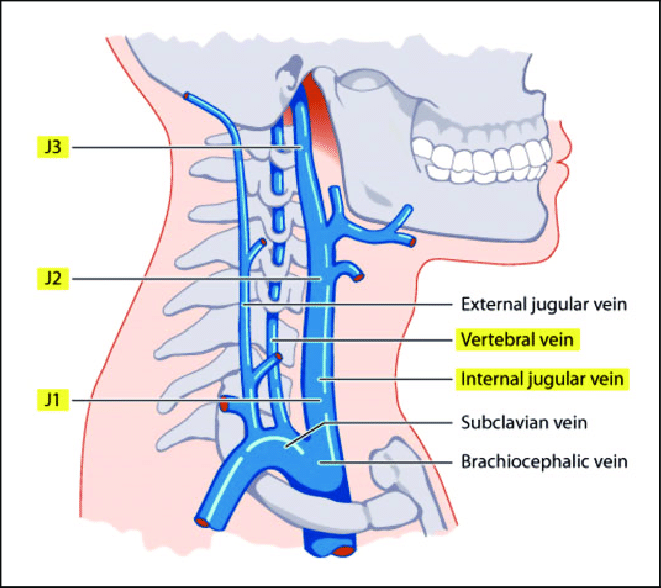颈内静脉超声评估

- 颈内静脉入无名静脉水平(J1)
- 甲状腺上静脉汇入颈内静脉水平(J2)
- 相当于颈总动脉分叉水平处至颈内静脉出颅水平段(J3)
颈内静脉结构评估参数:
平静呼吸时呼气末测 量J1 、J2 、J3 段最大内径及横断面积(其中J1 段内径在静脉瓣瓣根部水平测量)。
1, Reflux in the IJVs and/or vertebral veins (VVs) in orthostatic and supine postures; reflux was considered pathological when reversal flow lasted more than 0.88 s.
2,Reflux in the intracranial veins. Reflux is defined as a reversal of flow direction during the inspiratory and expiratory phase during normal breathing with mouth closed. The transcranial color-coded duplex sonography study was carried out using the transcondylar window, which assesses the direction of flow in the petrosal sinuses.
3,B-mode abnormalities/stenosis of the IJVs:
3a,presence of severe reduction of the Cross-Sectional Area (CSA) of IJVs in the supine position (<0.3 cm2), which does not increase after performing the Valsalva maneuver at the end of the examination;
3b,significant stenosis with simultaneous presence of intraluminal defects such as webs, septa, or malformed valves, and hemodynamic changes (block, reflux, increased velocity flow).
4,Flow not Doppler–detectable in IJVs and/or VVs despite numerous forced inspirations, in both sitting and supine position.
5,Negative D CSA (DCSA) in the IJV: the value is obtained by measuring the difference in IJV cross-sectional area between the supine and upright positions.